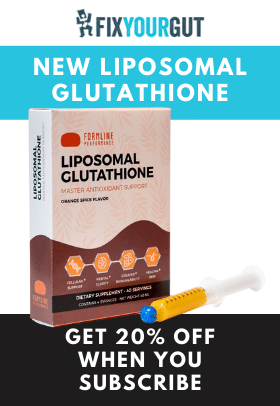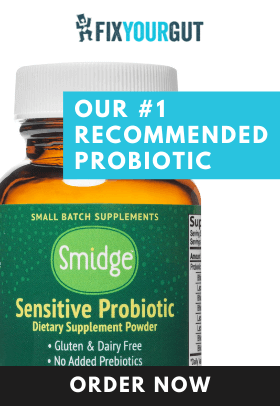There are essential medications that help many people, and there are some that I believe may have unnecessary risks. The same can be said about supplements. There are supplements which help people immensely, and there are some that carry more risks than benefits that give natural medicine a bad name. Many people in the natural health field chant the mantra, “if something is natural it must be good for you and cause no issues.” We have to hold ourselves to a higher standard. The natural health community as a group is already under enough scrutiny. Just because something is natural does not automatically mean it works, is healthy, or safe. The same can be said if something is artificially produced; it does not necessarily mean it is automatically unsafe. We need to weigh everything objectively. Grapefruit seed extract appears to be one of those supplements that you might want to avoid and find better alternatives for your health. Why might you ask? Let us find out together.
What is the Final Product Known as Grapefruit Seed Extract?
Who knows? No, really who knows?
Not knowing the actual active components in any supplements or medications and their mechanism of actions should always be met with caution. We are aware of the antimicrobial compounds in oil of oregano, carvacrol, and thymol. 1 2 Carvacrol inhibits bacterial growth and thymol reduces bacterial production of energy.3 4 5
GSE was discovered by the German researcher Jacob Harish in the 1980s. His discovery is claimed to have come from him noticing that grapefruit seeds would not break down properly in his compost pile. There are conflicting reports of his discovery as well. It is also noted that the idea of the antimicrobial properties of grapefruit seeds came from him ingesting grapefruit seeds and noticing they have a bitter taste. He later had the extract tested for its antimicrobial properties and developed a product known as Citricidal with the help of the University of Florida researchers Steven Otwell and Dr. Wayne Marshall.6 7
Sounds great right? The main issues with GSE are when you try to research what components of the extract have anti-microbial properties and why it works. Is it from the synthetic extraction of the extract from the grapefruit seeds, what is formed from the extraction itself, or the flavonoids it contains?
Three Different Theories – One Supplement I do not Recommend
There are three theories to explain the antimicrobial components of GSE:
- The exact antimicrobial components of grapefruit seed extract are from adulterants that are added during the production of the extract.
- The antimicrobial component of grapefruit seed extract stems from the final product formation of benzethonium chloride, an antimicrobial agent with reported health issues.
- Grapefruit seeds contain naringin, naringenin, hesperidin, and other flavonoids which have different antimicrobial properties.
Let us tackle the theories, first, the addition of antimicrobial adulterants that are found in grapefruit seed extract supplements which include:
- Benzethonium chloride – I will discuss this compound in more detail during the second theory. It is believed by most that it is added or is found in GSE supplements as a consequence of inferior production methods, instead of a compound that is formed from the extraction of grapefruit seed components.8 9 10 11
- Triclosan – a known synthetic endocrine disruptor with anti-microbial properties discovered as a production adulterant in studies of GSE.12 13
- Parabens – esters of PABA (para-aminobenzoic acid) which can be produced from natural or synthetic sources that have antimicrobial properties. Parabens have been linked to allergic reactions, weak xenoestrogen properties, and increases oxidative damage and stress from sun overexposure.14 15 16 17 18 19
- Cetrimonium bromide – a quaternary ammonium surfactant with antimicrobial properties. Though the amount of bromide in the compound is minute, bromide should still be avoided because of its ability to displace iodine in the thyroid gland and cause disruption. Bromide is a known skin irritant; it has also been discovered to be a gastrointestinal irritant in animals.20 21 22 23
Multiple studies have shown that these adulterants are found in tested GSE products and are more than likely the cause of its antimicrobial properties. Now granted a lot of products that are tested could have differing degrees of chemicals that we would not like to discover because of production processes, that being said this is still very alarming.
So what is a theorized antimicrobial component of GSE? Benzethonium chloride.
The production method for GSE is the following:24 25
- Grapefruit pulp and seed is dried and ground to a fine powder.
- The powder is dissolved in purified water and distilled to remove the fiber and pectin.
- The distilled slurry is spray dried at low temperatures forming a concentrated flavonoid powder.
- This concentrated powder is dissolved in vegetable glycerine and heated.
- Food grade ammonium chloride and ascorbic acid are added, and this mixture is heated under pressure. The amount of ammonium chloride remaining in finished Citricidal is 15-19%; the amount of ascorbic acid remaining is 2.5-3.0%.
- The ammoniated mixture undergoes catalytic conversion using natural catalysts, including hydrochloric acid and natural enzymes. There is no residue of hydrochloric acid after the reaction.
- The slurry is cooled, filtered, and treated with ultraviolet light.
The proposed principal active antimicrobial component of GSE is a concentration of benzethonium chloride at roughly 8-17%. However, most researchers believe that this compound is not produced during the production of GSE as the final product, but, in fact, is an adulterant that is added during its production.26
That being said, benzethonium chloride is still something I would not want to ingest at that concentration, even for the anti-microbial properties because of the issues associated with its use both as an antiseptic and a disinfectant.
How much benzethonium chloride does the FDA (Food and Drug Administration) allow in first aid products you may ask? The FDA allows .1-.2 % which is a significant difference between the 8-17% found in most GSE supplements.27
The concentrated amount of benzethonium chloride of GSE cannot be that reported high; it would cause significant issues at that dosage per the material safety data sheets (MSDS) from the United States Food and Drug Administration. So let us say there is at least 1% of benzethonium chloride in a single dosage of a GSE supplement. The amount of benzethonium chloride in a single dosage would be too much and could cause gastrointestinal upset, inflammation, eye inflammation if it comes into contact with the eyes, and allergic reactions.28 29 30 31 32
Finally, the MSDS of Citricidal lists the main active antimicrobial ingredient as sixty percent diphenol hydroxybenzene. The following are quotes from doctor Steve Humphries who worked for Hebe Botanicals, about the dangers of GSE. He explains the error in the MSDS listing of diphenol hydroxybenzene in greater detail:33
“The Material Safety Data Sheet (MSDS) for Citricidal lists it as “Diphenol hydroxybenzene”. This is completely misleading (and a potential safety hazard) as neither benzethonium chloride nor benzalkonium chloride can be described this way. Neither is it an accurate or informative description of the components of grapefruit seed.”
“In addition people with chemistry training will recognize that the description “diphenol hydroxybenzene” is not the correct way to name a chemical compound. ‘Hydroxybenzene‘ is a benzene ring with a hydroxy group attached, ‘phenol‘ is also a benzene ring with a hydroxy group attached. So “diphenol hydroxybenzene” just loosely says that we have some benzene rings with hydroxy groups stuck on them somewhere! All a completely untrue description of GSE. How this can be acceptable on an MSDS sheet, and can get through Customs, beats me.”
“The numerous studies that have found GSE to be effective as an antimicrobial or preservative are impossible to interpret given the high level of adulteration of commercial GSE. Given that truly natural extracts of grapefruit seed have been found to have much lower antimicrobial activity it would appear that the effectiveness reported for commercial GSE is due predominantly to the synthetic quaternary ammonium compounds in the product. Producers of ‘natural’ GSE warn consumers to keep the product out of the eyes. Quaternary ammonium compounds (such as benzethonium chloride) are particularly harmful to the eyes.“
Grapefruit seeds do contain flavonoids including naringin, naringenin and hesperidin. Two of the primary flavonoids found in grapefruit flesh, seeds, and GSE are naringin and naringenin. Naringin is metabolized by naringinase within our gut into naringenin. Naringenin is somewhat difficult to absorb orally, and at best fifteen percent is absorbed when ingested. The amount of naringin in grapefruit juice is 23.0 milligrams per 100 milliliters. The amount of naringenin in grapefruit juice is 4.20 milligrams per 100 milliliters. These flavonoids are also found in bergamot, tart cherries, tomatoes, cocoa, and bee propolis. Naringenin inhibits the CYP1A2 enzyme which metabolizes many pharmaceutical medications which is why many medications have a warning that states do not consume while eating grapefruit or drinking grapefruit juice. You would also need to avoid taking GSE around the same time you take these medications (the ones listed on the table under CYP1A2) as well. Naringenin may protect stomach tissue from excessive alcohol consumption, dysbiosis, and prevent the formation of gastric lesions. Naringenin is also being studied for its use against breast, stomach, liver, cervix, pancreas, colon, and blood (leukemia) types of cancer. It may work against breast cancer as an aromatase inhibitor.34 35 36 37 38 39 40 41
Naringenin does have potent antimicrobial properties. It has antibacterial effects against Staphylococcus epidermidis, Staphylococcus aureus, Bacillus subtilis, Micrococcus luteus, and Escherichia coli. Further research has added evidence for antimicrobial effects against Lactococcus lactis, Lactobacillus acidophilus, Actinomyces naeslundii, Prevotella oralis, Prevotella melaninogencia, Porphyromonas gingivalis. It also has antifungal effects against the following sub-types of Candida, Candida albicans, Candida tropicalis, and Candida krusei. It does have antimicrobial effects against H. pylori. However, it does not hinder its production of urease which produces ammonia in the stomach. Finally, it has shown antiviral activity against the hepatitis C virus.42 43 44 45 46
I could not find a standardized naringenin supplement that I can fully recommend and it is unknown its concentration in grapefruit seed extract supplements including Citricidal. You could however purchase Bulk Supplements naringin extract powder and put 1/4 teaspoon into capsules to take once or twice daily with food (as long as you are not taking these medications). The naringin extract will be metabolized into naringenin. I would also recommend consuming grapefruit juice (as long as you are not taking these medications) and eating tomatoes in moderation as a source of dietary naringen and naringenin if you are interested in it. If you want to learn more about naringenin I recommend reading this research study from 2019.
Conclusion
Grapefruit seed extract (Citricidal) should not be used, and I do not recommend it as an antimicrobial supplement. There are too many mysteries that surround the extract’s proper mechanism of action and if contamination during supplement processing is occurring. Furthermore, is the contamination “intentional” to enhance the antimicrobial potential in the final product? I do believe that naringin or naringenin supplementation or dietary ingestion might be beneficial depending on one’s individual need. Finally, depending on the exact cause of its antimicrobial properties GSE might be very harsh on the probiotic microbiome and might cause more harm than its worth to your digestive health. Therefore, I do not recommend the use of grapefruit seed extract (Citricidal).
- http://www.ncbi.nlm.nih.gov/pubmed/19075694 ↩
- http://www.ncbi.nlm.nih.gov/pubmed/17374894 ↩
- http://www.ncbi.nlm.nih.gov/pubmed/17374894 ↩
- http://www.ncbi.nlm.nih.gov/pmc/articles/PMC3873673/ ↩
- http://www.ncbi.nlm.nih.gov/pubmed/8602337 ↩
- https://articles.beeyoutiful.com/2009/01/29/the-skeptic-meets-grapefruit-seed-extract/ ↩
- http://citrosept.com/history/ ↩
- http://www.hebebotanicals.co.nz/grapefruit-seed-extract-gse-let-the-buyer-beware/ ↩
- https://www.ncbi.nlm.nih.gov/pubmed/11453769 ↩
- https://www.ncbi.nlm.nih.gov/pubmed/16719494 ↩
- https://www.ncbi.nlm.nih.gov/pubmed/16159196 ↩
- https://www.ncbi.nlm.nih.gov/pubmed/10399191 ↩
- http://www.ncbi.nlm.nih.gov/pubmed/20562219 ↩
- https://www.ncbi.nlm.nih.gov/pubmed/10399191 ↩
- http://www.medscape.com/viewarticle/508430_2 ↩
- https://www.ncbi.nlm.nih.gov/pubmed/576658 ↩
- https://www.ncbi.nlm.nih.gov/pubmed/23909435 ↩
- https://www.ncbi.nlm.nih.gov/pubmed/16938376 ↩
- https://www.ncbi.nlm.nih.gov/pubmed/18656963 ↩
- http://datasheets.scbt.com/sc-278833.pdf ↩
- http://ijt.sagepub.com/content/16/3/195 ↩
- https://www.google.com/url?sa=t&rct=j&q=&esrc=s&source=web&cd=4&cad=rja&uact=8&ved=0ahUKEwj9gcS2_4TLAhXFHx4KHYQ1AGwQFggxMAM&url=http%3A%2F%2Fwww.ncbi.nlm.nih.gov%2Fpmc%2Farticles%2FPMC501258%2F&usg=AFQjCNEu9CPkt4lihIpjjCN_Ribhm2-ysg&sig2=48m6WEtukwSmzYGnXtN0SQ ↩
- http://www.ncbi.nlm.nih.gov/pubmed/20411504 ↩
- http://www.itmonline.org/jintu/grapefruit.htm ↩
- http://chemicaloftheday.squarespace.com/most-controversial/2010/1/27/the-truth-about-grapefruit-seed-extract.html ↩
- http://www.itmonline.org/jintu/grapefruit.htm ↩
- http://ec.europa.eu/health/ph_risk/committees/sccp/documents/out250_en.pdf ↩
- http://ec.europa.eu/health/ph_risk/committees/sccp/documents/out250_en.pdf ↩
- http://www.cdc.gov/niosh/ipcsneng/neng0387.html ↩
- https://www.google.com/url?sa=t&rct=j&q=&esrc=s&source=web&cd=1&cad=rja&uact=8&ved=0ahUKEwiXjaL6gIXLAhXDkh4KHc3ZD8AQFggcMAA&url=http%3A%2F%2Fwww.fda.gov%2Fdownloads%2FAdvisoryCommittees%2FCommitteesMeetingMaterials%2FDrugs%2FNonprescriptionDrugsAdvisoryCommittee%2FUCM410289.pdf&usg=AFQjCNG3-16M5cBmXonEifug716MaKSvtw&sig2=aPH3uzVY0pQqPLZvKU49KA&bvm=bv.114733917,d.dmo ↩
- https://www.google.com/url?sa=t&rct=j&q=&esrc=s&source=web&cd=8&cad=rja&uact=8&ved=0ahUKEwiXjaL6gIXLAhXDkh4KHc3ZD8AQFghQMAc&url=http%3A%2F%2Fwww.ampakcompany.com%2Fdocs%2FBenzethonium_Newsletter-Ampak.pdf&usg=AFQjCNGbMe42_UwXgIEeYx7wt78tbQ733Q&sig2=wgtV6QjP9nY8-0Gf7ZKTsA&bvm=bv.114733917,d.dmo ↩
- http://www.naturalingredient.org/files/Citricidal%20Brochure.pdf ↩
- http://www.hebebotanicals.co.nz/grapefruit-seed-extract-gse-let-the-buyer-beware/ ↩
- https://www.sciencedirect.com/science/article/abs/pii/S003168659900062X ↩
- https://www.mdpi.com/1420-3049/12/8/1641 ↩
- https://www.ncbi.nlm.nih.gov/pubmed/16762341 ↩
- https://www.jstage.jst.go.jp/article/bpb/28/3/28_3_527/_article ↩
- https://www.ncbi.nlm.nih.gov/pubmed/17475517 ↩
- https://www.ncbi.nlm.nih.gov/pubmed/12652057 ↩
- https://www.ncbi.nlm.nih.gov/pubmed/10552377 ↩
- https://www.ncbi.nlm.nih.gov/pmc/articles/PMC4355785/ ↩
- https://www.sciencedirect.com/science/article/pii/S016816050000218X?via%3Dihub ↩
- https://www.ncbi.nlm.nih.gov/pubmed/18045389 ↩
- https://www.ncbi.nlm.nih.gov/pubmed/17475517 ↩
- https://www.sciencedirect.com/science/article/pii/S094450130500011X?via%3Dihub ↩
- https://www.ncbi.nlm.nih.gov/pubmed/18393287 ↩







Hi John
There may be a need to clarify between
Grapefruit seed extracts, abbre as GSE
and
Grape seed extacts, also abbre as GSE
Grape seed extract (vitis vinifera)
am not sure what latin is for grapefuit seed extract
Your concern is with grapefruit seed extact (I think).
Or both?
Grapefruit_seed_extract (GSE)
https://en.wikipedia.org/wiki/Grapefruit_seed_extract
Grape seed extract (GSE)
https://www.ncbi.nlm.nih.gov/pmc/articles/PMC2802543/
Been using Nutribiotic’s GSE tablets for 5+ years at high dosages. The max recommended dose is 1600mg daily which I have had periods of taking. It’s the only thing that killed certain gut infections I had that modern medicine and naturopaths failed to treat. I don’t think all GSE brands are good, you have to get the best ones.
Nutribiotic created a monograph years ago detailing all the organisms their product can kill. At that point the FDA tried to limit them, which I’m convinced the media scares are about.
Been taking it for years with no health problems related to it and it has helped me get my life back from serious IBD.
In my case, GSE (Citricidal) wiped out SIBO more quickly and effectively, than any other antibacterial supplement. And I tried to beat it for 4 years with oregano, caprylic acid, thyme, turmeric, berberine, even powerful antibiotics with almost no success. I also had low platelet count and I frequently do CBC to monitor it. Once I added GSE, platelent count started to increase! And within a month it was over 150!!! My fatigue and brain fog were almost gone and then wiped out completely with probiotics, which I started once I finished taking antimicrobials and started rebuild phase.
GSE is the best thing and I never had any side effects with it.
David, I really appreciate your testimony and am glad to hear of your improved health. It was recently confirmed that I have SIBO. I’m currently looking for a treatment plan incorporating GSE, but not finding much. I’d greatly appreciate knowing what protocol you found successful. Thanks!
John is absolutely correct. Also, grapefruit seed extract has solvents in it! Also, grapefruit seed extract kills good bacteria too, not just bad. So this should not be taken. You will be much better off with cinnamon bark oil (cinnamomum zeylanicum only, not cassia) by Now brand. This kills bad bacteria effectively with minimally hurting healthy bacteria.
This has already been debunked. Its lies and you are spreading them like you do with everything else on your blogs. You have no clinical or research background and just graduated high school. stop posting false info
Debunked by whom? Yes, I only have a high school degree, but did that hold back the following people?
Bill Gates
Larry Ellison
Michael Dell
Thomas Edison
Mark Zuckerburg
Steve Jobs
Michael Faraday
Albert Einstein
Henry Ford
Nikola Tesla
Thank you for the extensive research on this.
Would you say this affects all brands? Even this http://www.nutribiotic.com/gse-liquid-concentrate-2oz.html?
Many people swear by this, and say it is not mixed with anything else. It’s difficult to know these days without testing every single supplement in labs, but that becomes quite expensive very quickly.
Yes, I believe all brands from my research.
What about using it as a disinfectant cleaner in bathrooms, kitchens, children’s toys? I’m so sensitive to fumes and smells, and chemical cleaners scare me frankly, but so do the germs. I need my home to be as safe as possible.
I’ve had psoriasis on my elbow for years now and while the ointment my dermatologist prescribed helps with the itch, the redness never goes away. I started reading about candida recently and felt I might have a lot of the symptoms of that and then I read about grapefruit seed extract as a remedy. So I thought I’d give it a try. I don’t know if it helped candida (or if I even had that), but one thing it has helped is my psoriasis. Remember that the redness hasn’t gone away in 2 or more years. Now all of a sudden, the redness is going away ever since I started using the grapefruit seed extract. (I was using 10-15 drops in my tea in the morning.)
Then I started reading these articles about the fears of it containing chemicals. That freaked me out so I stopped using it. The redness on my arm returned. I went a couple of weeks of not using the product and the psoriasis was definitely back. So I started using the grapefruit seed extract again and sure enough, the redness started going away again. There is clearly an effect of the GSE on the psoriasis. But I read these articles and still worry about the chemicals.
What I can’t discern is if people complaining about the chemicals are upset just because there are other things than what’s listed in the ingredients, or if they feel the chemicals are harmful and shouldn’t be ingested. Or both.
Pretty conflicting comments up there eh?
Very good product. I will continue to take it. My family have used it for over 22years, without any issues.
Awesome article. I have experimented with GSE. Perhaps I’ll throw it out now…I remember reading about the potential dangers but sometimes anecdotal success stories can blind you.